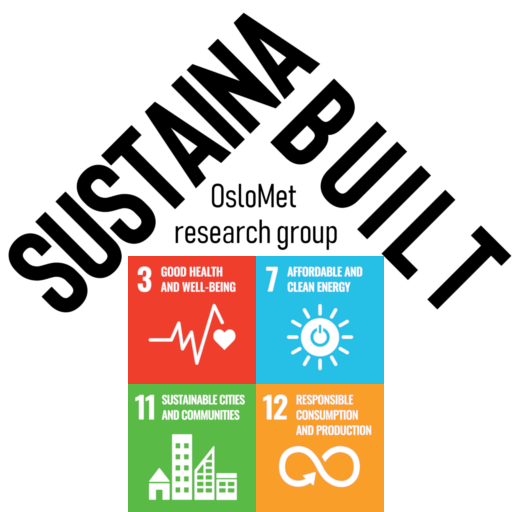Faculty Publications (Scholarly Results)
2009 ▲▼
Arnkell PETERSEN, Ida BRYN, Peter G. SCHILD, Elisabeth HAUGEN, [Mangler fornavn] ET. AL (2009) “Forhold tilknyttet bruk av roterende gjenvinnere i skoler”🔓 [Language NB]. [Report] Erichsen & Horgen AS & Undervisningsbygg …
Abstract: [Translated from Norwegian] For a number of years, discussions have taken place internally in UBF and UDE about whether it is safe to use rotating heat recuperators in ventilation systems in schools. The present report has been prepared with regard to to shed light on this issue and form a decision-making basis for UBF and UDE. The report documents an investigation of the general condition, the hygienic condition, microbiology, leakage, dust concentrations, dust composition, moisture conditions, temperature conditions and temperature efficiency in five ventilation systems with rotating heat recovery in Oslo schools. The report’s main conclusions are as follows: • There is a need to sharpen and create follow-up and maintenance routines for the pressure, hygiene and air volume conditions in ventilation systems. • There are strong indications of generally inadequate assembly/adjustment of blow-cleaning sectors, as well as pressurisation, of aggregates with rotating recyclers. • There is a need for better solutions that take into account the amount of purge air when calculating the amount of air in the facilities. • The measured temperature efficiency is of the same order of magnitude as that stated by the supplier. But worsens significantly if account is taken of the imbalance between supply air and exhaust air quantities in the facilities, a reduction of up to 14%. • It may be difficult to comply with TEK07, without using rotary reclaimers. • No hygienic conditions have been found that speak against the use of rotating recyclers in schools. • The leakage from exhaust to supply air is determined in the plants to be 0.2-2.4%, disregarding the plant that has an incorrectly installed purge zone. • The use of rotating recyclers is recommended in all premises where the exhaust does not contain grease, a lot of moisture, solvents, strong odors and particular amounts of dust.
Arnab CHAUDHURI, A. HADJADJ, C. GUHA, T.K. DUTTA (2009) “Chapter 8: Numerical simulations of microscale gas flows: continuum approach”🔓. in M. STRANGIO (Ed.), Recent Advances in Technologies, IntechOpen, p.121-146 …
Abstract: Subchapters: Flow regimes and models; Fluid flow and heat transfer in microchannels and micronozzles, Reactive flow in microchannels, Shock-waves in microscales, Conclusions
Finn DRANGSHOLT, Geir DRANGSHOLT (2009) “Brannteknisk analyse av ny tørrdokk – Håkonsvern” [Language NO]. [Report] TekØk AS
Abstract not available
Finn DRANGSHOLT (2009) “Prosjektering av automatiseringsanlegg” [Language NO]. [Report] Trondheim Kommune
Abstract not available
Oddbjørn SJØVOLD (2009) “Inneklimaundersøkelse i bolig i Stjørdal” [Language NO]. [Report] Trøndelag Forskning og utvikling
Abstract not available
Oddbjørn SJØVOLD (2009) “Inneklimaundersøkelse Helse Nord- Trøndelag HF, Kirkegata 2, Levanger” [Language NO]. [Report] Trøndelag Forskning og Utvikling
Abstract not available
Finn DRANGSHOLT, Geir DRANGSHOLT (2009) “Gjennomgang av brannsikkerhetsstrategi med tilhørende analysedokumenter for Herkules handelspark” [Language NB]. [Report] SINTEF
Abstract not available
Oddbjørn SJØVOLD (2009) “Inneklimaundersøkelse , Nordlåna ved Høgskolen i Nord-Trøndelag, Levanger” [Language NO]. [Report] Trøndelag Forskning og Utvikling
Abstract not available
Oddbjørn SJØVOLD (2009) “Inneklimaoppdrag i Bergstien 8 , Levanger” [Language NO]. [Report] Trøndelag Forskning og Utvikling
Abstract not available
